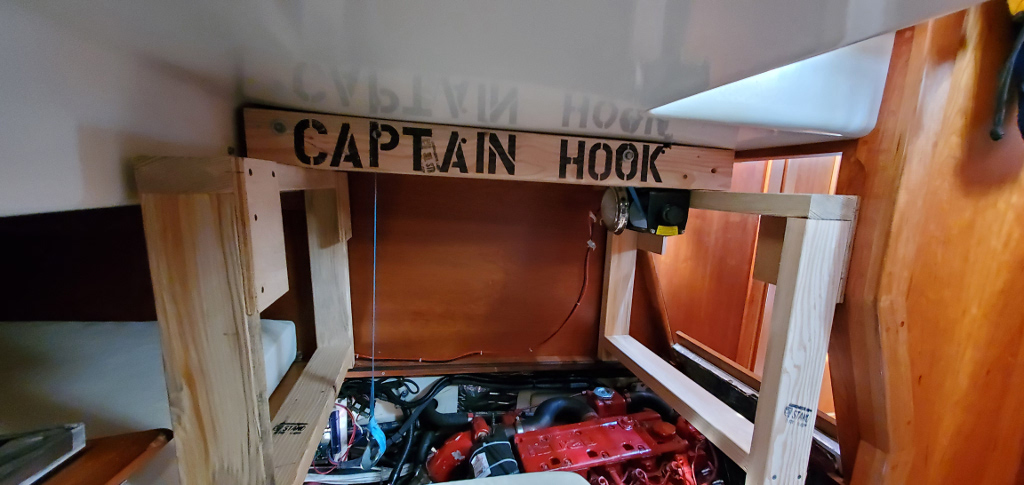
How a transmission fluid leak on a perfectly good transmission led to transmission replacement.
Happily sailing up the coast of Washington and into Neah Bay I was soon to find out that Estrella’s transmission was leaking fluid at an abnormal rate.
Keeping an eye on the leak I found that I was losing a cup of fluid every 15 operating hours. No leaking when the engine was not running.
The transmission was operating fine, no funny noises and always did what I asked.
Through my trip I made sure the transmission always had fluid.
But where was the fluid coming from?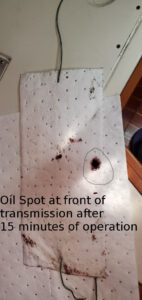
After returning to home port, I wrapped the bottom of the transmission and bell housing with a fluid diaper and motored around for about an hour. Upon return I could plainly see that fluid was coming from the front of the transmission.
Okay, hopefully just a seal. Order a seal and gasket kit and pull the transmission.
Pulling the transmission requires removing and 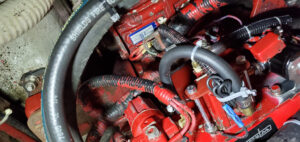 moving lots of stuff. (see my 21 steps to remove Estrella’s transmision page). Fuel hoses, raw water hoses, oil filter hoses, electrical connections, exhaust pipes all had to be removed before I could
moving lots of stuff. (see my 21 steps to remove Estrella’s transmision page). Fuel hoses, raw water hoses, oil filter hoses, electrical connections, exhaust pipes all had to be removed before I could 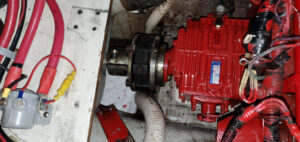 reach the transmission. Then there is the Bull Flex coupler and drive shaft. Finally just the transmission.
reach the transmission. Then there is the Bull Flex coupler and drive shaft. Finally just the transmission.
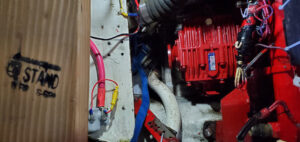
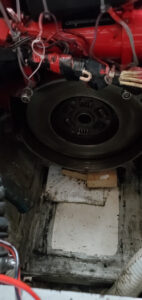
Upon removal I immediately noticed a missing bolt from the set of bolts holding the transmission to the transmission adaptor plate (that bolts onto the bell housing). The bolt was at the bottom of the bell housing.
Not a good sign.
Getting the transmission and adapter plate back to my shop, I found that three other mounting bolts had also stripped the threads from the transmission and there were only two bolts holding the transmission on to the adapter plate. WOW. A fast move from forward to reverse could have easily ripped the transmission from the adapter plate. Boy would that have made an awful noise not to mention loss of power. 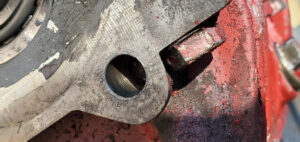
With the adapter plate removed I inspected the input shaft seal and all looked well, however, the plate that holds the seal and is bolted on to the transmission had two of its four bolts so loose I could wiggle the lock washers!. Removing the plate I found the gasket in pieces. Guess where the fluid was coming from!
This transmission casing was NOT going back into Estrella. After a week of searching for a casing I could swap the guts of my transmission into, I gave up and bit the bullet. I had to buy a new transmission. 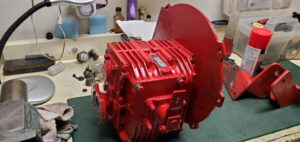
The transmission case is cast aluminum and the mounting holes are dead ended, that is, they don’t go through and have a specific depth. One of the problems that can occur when bolting the transmission to the adapter plate is ‘over torquing’ those bolts. It can be very easy to strip the soft aluminum threads. I wanted to solve this problem.
Instead of bolts, I chose to put threaded studs into the transmission with red loctite. This allowed me to bottom out the studs maximizing the threads I was holding while not putting torque on the studs. This leaves the threads completely intact with maximum strength. In addition, I would not be ‘turning’ against the threads while I tightened the adapter plate to the transmission. 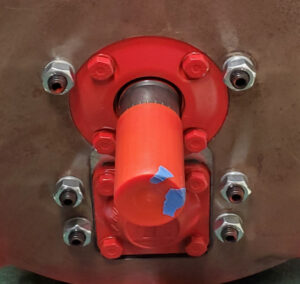
The adapter plate easily fit over the studs and I used lock washers, nuts and blue loctite to torque down the adapter plate. For those interested, I used M12 1.5 40mm set screws as my studs.
Thank you to Mike Gozzard for helping me through the process of case hunting and buying a new transmission, Thanks to Al, my partner and mechanical engineer for helping me remove the transmission and a big thanks to ‘Captain Hook’, my trusty automated winch that did the heavy lifting!
epologue There are only two ways the transmission casing mounting hole threads could have been so damaged. 1) They were never tightened to torque spec (25ft lb). and were to loose, Eventually the diesel engine vibration worked them looser and tore at the threads. 2) They were tightened too far and stripped the threads or nearly stripped the threads.
There is no way to check these bolts without removing the transmission. But, there were other hints!
First hint. The cinch bolts that hold the Bullflex shaft coupler had clearly been removed before. One of the cinch nuts had rounded edges (from using an open end wrench) so bad that a box wrench would not fit over the nut. This was the first indication that maybe someone who didn’t know what they were doing had gotten in this deep.
Second hint. The adapter plate to bell housing bolts which also hold the motor mount legs were not torque to spec. They barely needed a push to loosen.
Estrella Sailing Vessel | All Rights Reserved.
Recent Comments